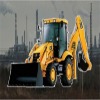Container hospitals
Container House Used in Health Care
Durable Medical (DM) Containers have found a new purpose: healthcare.
From emergency response to providing medical facilities in remote areas, containers are emerging as a versatile solution in the healthcare sector. This article will explore the various applications, benefits, design considerations, and challenges associated with container houses in healthcare.
II. Benefits of DM Durable Medical Containers in Healthcare
A. Flexibility and mobility
Containers offer unmatched flexibility and mobility. They can be easily transported and deployed to remote or disaster-stricken areas where conventional medical infrastructure is lacking. The ability to relocate these facilities as needed is particularly beneficial during emergencies or when healthcare needs shift.
B. Cost-effectiveness
One of the significant advantages of using container houses in healthcare is their cost-effectiveness.
Compared to traditional brick-and-mortar buildings, container houses require less time and money to construct. This makes them an ideal option for healthcare facilities, especially in areas with budgetary constraints.
C. Rapid deployment
Containers can be rapidly deployed, significantly reducing the time between planning and implementation. This rapid deployment is especially crucial during emergencies, such as natural disasters or pandemics, where immediate medical attention is required.
D. Environmental sustainability
Containers are inherently eco-friendly, as they involve repurposing materials that would otherwise go to waste. By using shipping containers, the environmental impact is significantly reduced. Additionally, these structures can be designed with sustainability in mind, incorporating features such as solar panels and rainwater harvesting systems.
III. Applications in Healthcare
A. Hospitals and clinics
Container houses can be transformed into fully functional hospitals and clinics, providing a wide range of medical services. These facilities are particularly useful in areas with limited access to healthcare infrastructure, helping to bridge the gap and improve medical outcomes.
B. Isolation units
During pandemics or disease outbreaks, container houses can serve as isolation units. These units can be quickly set up to quarantine infected individuals, helping to prevent the spread of contagious diseases while providing necessary medical care.
C. Mobile medical units
Containers can be configured as mobile medical units, equipped with essential medical equipment and staffed by healthcare professionals. These units can travel to remote or underserved areas, providing healthcare services to populations that would otherwise struggle to access them.
D. Disaster response
Containers play a vital role in disaster response efforts. Whether providing immediate medical attention after a natural disaster or setting up field hospitals in conflict zones, container houses offer a practical and efficient solution for delivering healthcare services in challenging environments.
IV. Design and Construction
A. Structural considerations
When designing containers for healthcare, structural integrity is paramount. These structures must be able to withstand transportation and be durable enough to provide long-term medical services. Reinforcements and modifications are often necessary to ensure the safety and stability of the facility.
B. Interior design and layout
The interior design and layout of containers in healthcare are crucial for creating a functional and comfortable environment for both patients and medical staff. Proper insulation, ventilation, and space utilization are essential factors to consider during the design phase.
C. Installation of medical equipment
Containers need to be equipped with the necessary medical equipment to provide adequate healthcare services. Installing medical equipment requires careful planning to ensure that the facility can accommodate the equipment and that it meets the required safety standards.
V. Challenges and Solutions
A. Regulatory compliance
Adhering to healthcare regulations and standards is one of the primary challenges when using container houses in healthcare. Ensuring compliance with local and international regulations is essential to guarantee the safety and quality of care provided in these facilities.
B. Insulation and climate control
Maintaining suitable temperatures inside container houses, especially in extreme climates, can be challenging. Proper insulation and climate control systems must be installed to ensure the comfort and well-being of patients and medical staff.
C. Accessibility and space constraints
Space constraints and accessibility issues are common challenges in container houses. Designing the layout to optimize space while ensuring accessibility for patients with disabilities is crucial for providing inclusive healthcare services.
D. Maintenance and longevity
Containers require regular maintenance to ensure their longevity and functionality. Implementing a comprehensive maintenance plan is essential to address wear and tear, prevent structural issues, and extend the lifespan of the facility.
VI. Future Prospects
A. Advancements in container house technology
As technology advances, so will the capabilities of container houses in healthcare. Innovations in materials, construction techniques, and medical equipment will further enhance the efficiency and effectiveness of container-based medical facilities.
B. Integration of smart healthcare systems
The integration of smart healthcare systems into container houses will revolutionize healthcare delivery. From telemedicine to remote patient monitoring, these advancements will improve patient outcomes and streamline healthcare services.
C. Global adoption and expansion
The global adoption of containers in healthcare is expected to increase, driven by the need for flexible, cost-effective medical infrastructure. Containers will continue to play a significant role in expanding access to healthcare services, particularly in underserved and remote areas.
VII. Conclusion
Containers offer a practical and efficient solution to the growing demand for healthcare infrastructure. From hospitals and clinics to mobile medical units and disaster response facilities, containers are revolutionizing the way healthcare services are delivered. With their flexibility, cost-effectiveness, and sustainability, container houses are well-positioned to address the healthcare needs of diverse populations around the world.
5 Unique FAQs
1. Can containers be customized to meet specific healthcare needs?
Yes, containers can be fully customized to meet specific healthcare requirements. From hospital wards to isolation units, these facilities can be tailored to accommodate various medical services and equipment.
2. Are containers in healthcare compliant with medical standards and regulations?
Yes, containers in healthcare are designed and constructed to comply with medical standards and regulations. Adherence to these standards ensures the safety and quality of care provided in these facilities.
3. How long does it take to set up a container house as a medical facility?
The time it takes to set up containers as a medical facility depends on various factors, including the complexity of the design and the availability of resources. However, with proper planning, container houses can be rapidly deployed, significantly reducing the time between planning and implementation.
4. What are the environmental benefits of using containers in healthcare?
Containers in healthcare offer several environmental benefits, including the repurposing of materials, reduced construction waste, and the incorporation of sustainable features such as solar panels and rainwater harvesting systems.
These eco-friendly practices contribute to a greener and more sustainable healthcare infrastructure.
5. How do container houses in healthcare ensure patient comfort and safety?
Containers in healthcare ensure patient comfort and safety through careful design and construction. Proper insulation, ventilation, and climate control systems are installed to maintain suitable temperatures, while adherence to healthcare regulations and standards guarantees the safety and quality of care provided in these facilities.
Why are containers suitable for use as medical stations?
Containers, also known as shipping containers, have garnered significant attention in recent years due to their versatility and sustainability. Originally designed for transporting goods across long distances, these re-purposed containers are finding new applications, including serving as medical stations. In this article, we explore why container houses are ideal for use as medical stations, offering insights into their flexibility, cost-effectiveness, durability, and other key advantages.
I. Introduction
Containers are modular structures constructed from re purposed shipping containers. These containers, typically made of steel, offer a sturdy and secure framework for various architectural purposes. Medical stations, particularly in remote or disaster-stricken areas, require structures that are quick to deploy, cost-effective, and able to withstand harsh conditions. Container houses fulfill these criteria admirably, making them a viable option for setting up medical facilities in challenging environments.
II. Flexibility and Mobility
One of the primary advantages of container houses is their mobility. These structures can be easily transported to remote locations, providing essential medical services where they are needed most. Unlike traditional buildings, containers can be swiftly relocated as circumstances dictate, ensuring flexibility in response to changing healthcare demands.
III. Cost-effectiveness
Containers offer a cost-effective solution for establishing medical stations. Compared to constructing permanent buildings, re purposing shipping containers significantly reduces construction costs and time. This cost-effectiveness is particularly beneficial for resource-constrained healthcare settings, allowing organizations to allocate funds towards essential medical equipment and services.
IV. Customization and Adaptability
Containers can be customized to meet the specific requirements of medical stations. From layout design to interior fittings, these modular structures offer flexibility in adapting to different healthcare needs. Whether serving as clinics, triage centers, or temporary wards, containers can be tailored to optimize space utilization and functionality.
V. Durability and Strength
Constructed from steel, shipping containers are inherently durable and resistant to environmental hazards. This durability ensures the structural integrity of containers, making them suitable for use in disaster-prone areas or harsh climates. Additionally, container houses can withstand transportation stresses, further enhancing their reliability for deployment as medical stations.
VI. Sustainability
Containers align with sustainability goals by re-purposing existing materials and reducing construction waste. By recycling decommissioned shipping containers, these structures minimize environmental impact while offering a sustainable solution for healthcare infrastructure. Moreover, containers can incorporate eco-friendly features such as solar panels and rainwater harvesting systems, further reducing their carbon footprint.
VII. Quick Deployment
In emergency situations, rapid deployment of medical facilities is essential for saving lives. Containers excel in this aspect, requiring minimal time and effort for setup. With pre-fabricated components and standardized construction processes, these modular structures can be operational within days, providing timely medical assistance to affected populations.
VIII. Accessibility
Containers enhance accessibility to healthcare services, especially in underserved or remote areas. Their mobility enables healthcare providers to reach communities that would otherwise lack access to medical care. By bringing healthcare closer to the people, containers contribute to improving health outcomes and reducing disparities in healthcare access.
IX.Future Potential
The versatility of containers suggests a promising future for their use in healthcare. As technology advances and design innovations evolve, container-based medical facilities will become even more efficient and adaptable. Future developments may include modular expansion options, advanced medical equipment integration, and improved sustainability features.
X. Challenges and Solutions
While containers offer numerous benefits, they also present challenges such as insulation, ventilation, and compliance with healthcare regulations. However, innovative solutions, such as insulation materials and HVAC systems tailored for container structures, can address these challenges effectively. Collaborative efforts between architects, engineers, and healthcare professionals are essential for overcoming such obstacles and maximizing the potential of containers for medical use.
XI. Safety and Regulations
Ensuring the safety and regulatory compliance of container houses used as medical stations is paramount. Adequate ventilation, fire safety measures, and sanitation standards must be upheld to safeguard the health and well-being of patients and staff. Regulatory bodies play a crucial role in establishing guidelines and standards for container-based healthcare facilities, ensuring their efficacy and adherence to quality standards.
XII. Public Perception and Acceptance
Public perception of container houses as medical facilities may vary depending on cultural norms and familiarity with modular construction. However, educating communities about the benefits and safety standards of container-based healthcare can help alleviate concerns and foster acceptance. Public engagement initiatives, coupled with transparent communication from healthcare authorities, are essential for gaining community trust and support.
XIII. Conclusion
In conclusion, containes offer a practical and sustainable solution for establishing medical stations in diverse environments. Their flexibility, cost-effectiveness, durability, and mobility make them well-suited for addressing healthcare needs in both routine and emergency settings. By leveraging the inherent advantages of container-based construction, healthcare organizations can enhance access to quality medical services and improve health outcomes for communities worldwide.
FAQs
1. Are containers suitable for long-term use as medical stations?
Yes, with proper maintenance and periodic inspections, containers can serve as durable and reliable medical facilities for extended periods.
2. How are containers transported to remote areas?
Containers can be transported via trucks, ships, or even helicopters, depending on the accessibility of the location and the size of the containers.
3. Can containers accommodate specialized medical equipment?
Yes, containers can be customized to accommodate various medical equipment and facilities, ensuring they meet the specific needs of healthcare providers.
4. Are container houses environmentally friendly?
Yes, repurposing shipping containers reduces the demand for new construction materials and minimizes construction waste, making container houses an environmentally sustainable option.
5. What measures are in place to ensure the safety of container-based medical stations?
Container-based medical stations adhere to safety regulations and standards set by relevant authorities. Measures include proper ventilation, fire safety systems, and sanitation protocols to ensure the well-being of patients and staff.

 Aircraft
Aircraft Business Opportunities / Investments
Business Opportunities / Investments Chemicals
Chemicals Clearance/Liquidations
Clearance/Liquidations Commodities ( Rice, Sugar , Soy Grains, Minerals and Ore)
Commodities ( Rice, Sugar , Soy Grains, Minerals and Ore)  Fire/Rescue/Medical
Fire/Rescue/Medical Food/Beverages
Food/Beverages  Housing
Housing Military Equipment/Unrestricted
Military Equipment/Unrestricted Military/Police
Military/Police Pet Supply
Pet Supply Petroleum Product
Petroleum Product Plant and Equipment
Plant and Equipment Recyclable-HMS-PVC
Recyclable-HMS-PVC Ships/Vessels/Boats
Ships/Vessels/Boats Solar/Wind-Power
Solar/Wind-Power Vehicles
Vehicles Wanted
Wanted Zoo supply (unrestricted )
Zoo supply (unrestricted )


